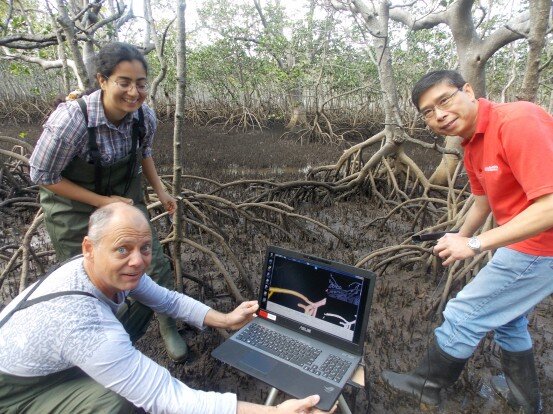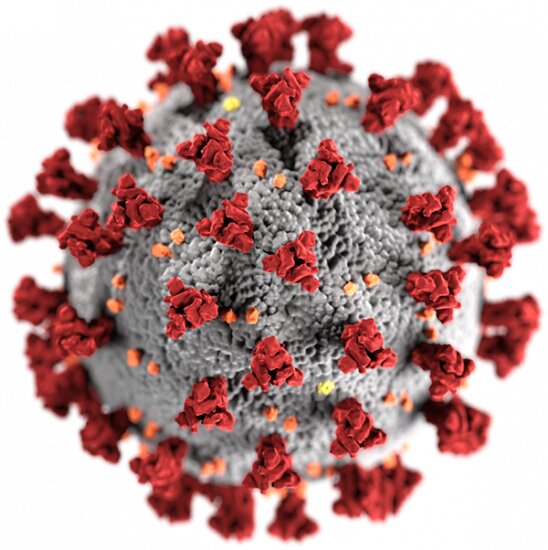#Lack of species depth threatens mangroves

“#Lack of species depth threatens mangroves”

Marine ecologists have revealed mangroves might be threatened by a limited number of crustaceans, molluscs and other invertebrates for each ecological role.
The international study found that low functional redundancy, or number of species performing similar roles in mangrove forests, suggests even a modest loss of invertebrates could have significant consequences.
“Mangrove forests have been disappearing at alarming rates worldwide,” said Professor Shing Yip Lee from the Chinese University of Hong Kong and Adjunct at Australian Rivers Institute, Griffith University.
“The ecological functions and services they provide depend upon the relationships between their individual plant and animal components.
“There is no viable mangrove forest without a healthy community of invertebrates sustaining it.”
Although mangrove ecosystems support a broad range of specialised invertebrates, little is known about the effect of deforestation and human impact on the functional diversity and resilience of these resident fauna.
To address this question, the team compiled a dataset of 209 crustacean and 155 mollusc species from 16 mangrove forests around the world. They found that mangroves, when compared with other ecosystems, are among those with the lowest the number of animals serving same ecological role.
“A high functional redundancy is a sort of ‘ecological insurance’ for a given forest, since if one species is lost, another can fulfil its function, ultimately keeping the ecosystem viable,” Professor Lee said.
“The low redundancy of the mangrove invertebrates suggests that these coastal vegetations are one of the most precarious ecosystems in the world in the face of the recent anthropogenic changes.”
The authors classified the species into 64 functional groups based on feeding habits, behavioural traits, and micro-habitat.
More than 60% of the sites tested showed no functional redundancy, meaning only one species filled each particular functional niche.
“Even a modest loss of invertebrate diversity could have significant consequences for mangrove functionality and resilience because invertebrates in a mangrove forest are crucial for nutrient cycling and for providing oxygen to the tree roots, Professor Lee said.
“Without local invertebrate fauna, mangrove forests will not be able to function, robbing humanity of their many beneficial services. For this reason, a few small mangrove patches with a higher number of invertebrates filling each ecological niche, such as those in Hong Kong and Mozambique, may serve as critical biodiversity reservoirs critical for future conservation efforts.”
Studying the functional diversity of the resident animal populations is crucial for determining the vulnerability of mangrove forests to environmental change and for designing effective conservation and restoration plans.
“At present, the health and resilience of mangrove forests around the world are assessed through their overall increase in area. But this approach doesn’t consider the real viability and functionality of those forests.
“Our findings suggest that faunal functional diversity may be a better measure of mangrove resilience than the conventional indicator of forest size.
“Mangrove management and rehabilitation projects need to take into account not just the increase in size of a mangrove, but also the stability and redundancy of its faunal component.”
The findings were published in The Proceedings of the National Academy of Sciences (PNAS).
Mangrove forests store more carbon when they’re more diverse
Stefano Cannicci et al, A functional analysis reveals extremely low redundancy in global mangrove invertebrate fauna, Proceedings of the National Academy of Sciences (2021). DOI: 10.1073/pnas.2016913118
Citation:
Lack of species depth threatens mangroves (2021, July 27)
retrieved 27 July 2021
from https://phys.org/news/2021-07-lack-species-depth-threatens-mangroves.html
This document is subject to copyright. Apart from any fair dealing for the purpose of private study or research, no
part may be reproduced without the written permission. The content is provided for information purposes only.
If you liked the article, do not forget to share it with your friends. Follow us on Google News too, click on the star and choose us from your favorites.
For forums sites go to Forum.BuradaBiliyorum.Com
If you want to read more Like this articles, you can visit our Science category.




